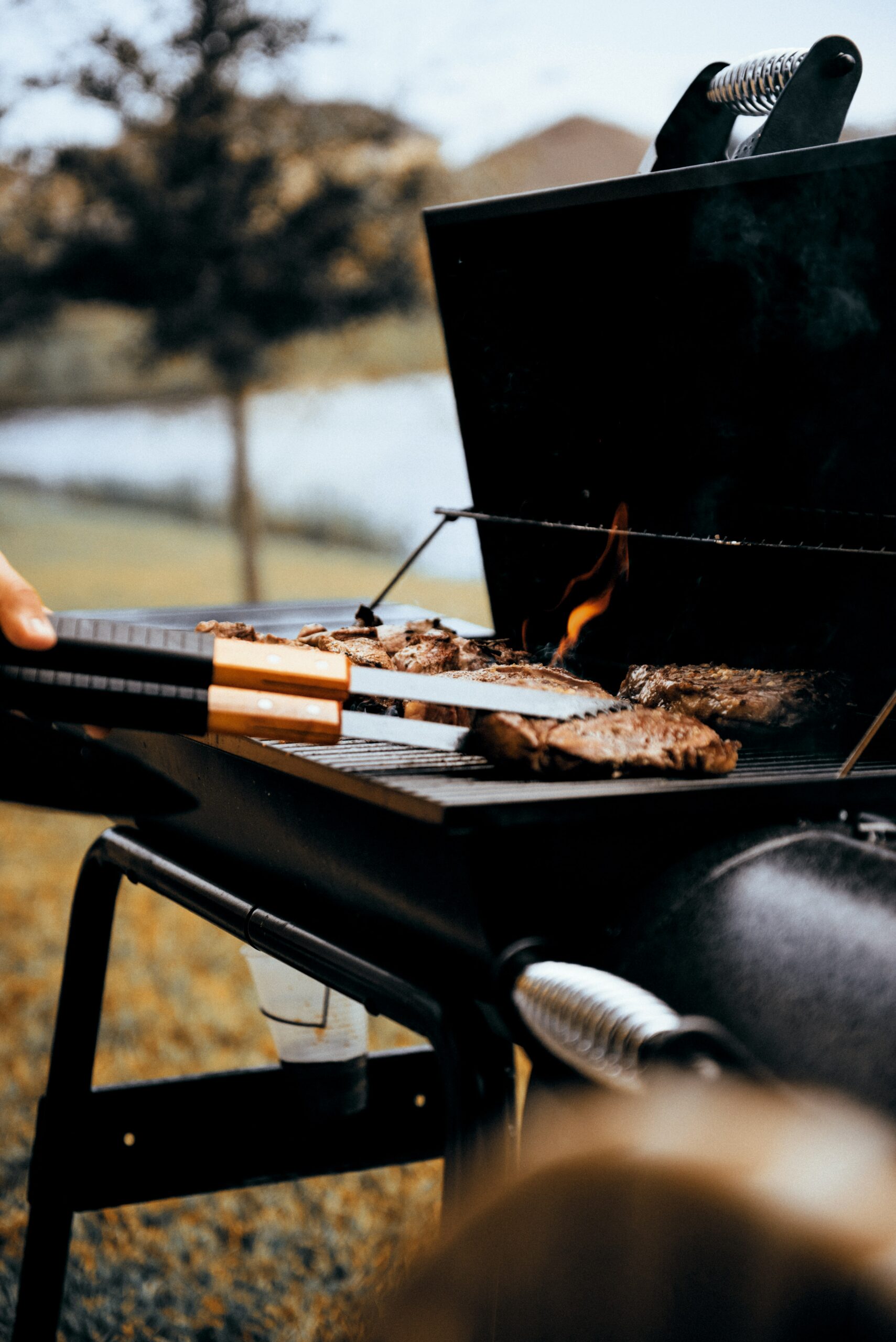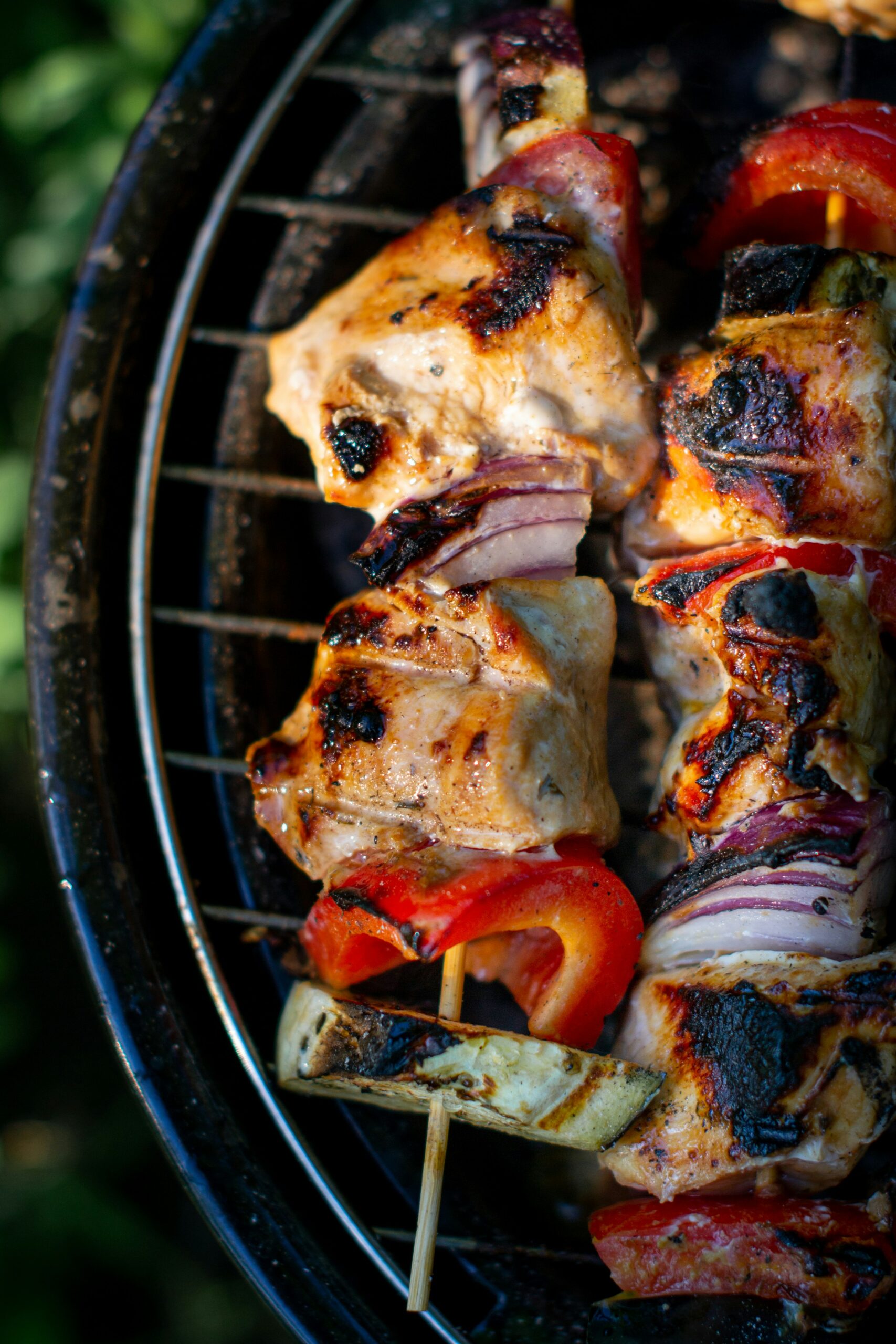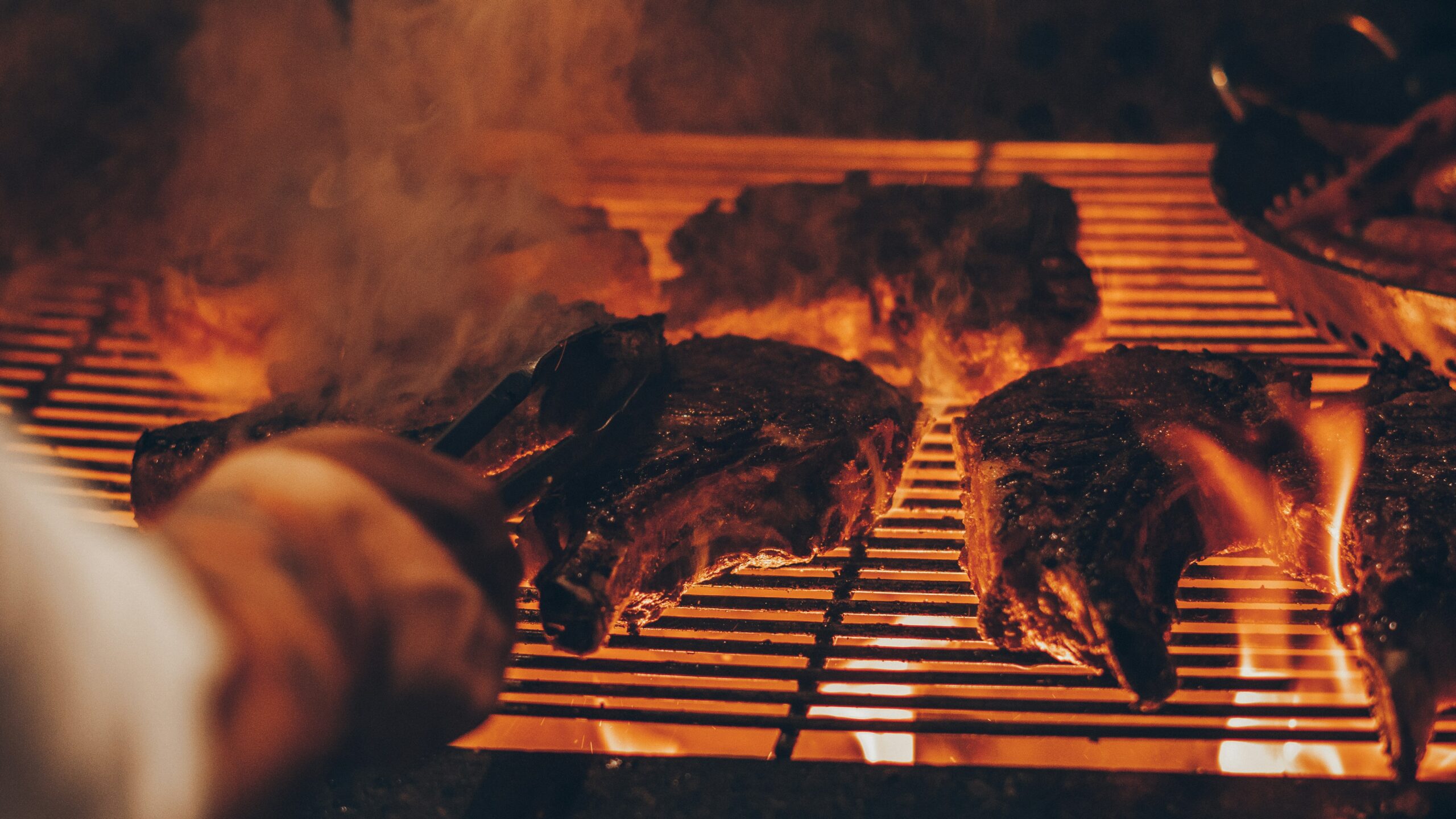You might have heard about it, you might have tasted it, but have you ever wondered what truly defines the Southern approach to barbecue? Brace yourself for a mouth-watering exploration of the rich traditions and distinctive flavors that have shaped this beloved American culinary tradition. From slow-cooked meats drenched in tangy sauces to secret spice rubs and smoking techniques passed down through generations, the Southern approach to barbecue is a celebration of flavor, community, and the art of grilling. So grab your napkins and prepare to embark on a delicious journey through the heart and soul of Southern barbecue.

Historical Overview of Southern Barbecue
A brief history of Southern Barbecue
The origins of Southern Barbecue can be traced back to Native American tribes who used smoking and slow-cooking techniques to preserve and cook meat. However, it was the arrival of African slaves in the Southern United States during the 17th and 18th centuries that significantly influenced the development of Southern Barbecue as we know it today. The slaves brought with them their knowledge of smoking and seasoning meats, which blended with the available ingredients and cooking methods of the Southern region.
Role of Barbecue in Southern culture
Barbecue holds a special place in Southern culture, symbolizing community, gathering, and celebration. Southern Barbecue is not just a way of cooking food; it is an experience that brings people together. Whether it’s a family reunion, a neighborhood block party, or a large-scale event, barbecue plays a central role in social gatherings throughout the South. It fosters a sense of togetherness, promotes storytelling and laughter, and serves as a way to honor Southern traditions and heritage.
Barbecue as a social event
Southern Barbecue is not just about the food; it is about the entire event. The preparation of barbecue is often a communal effort, with family and friends coming together to help with the cooking process. It is a time for conversation, bonding, and creating lasting memories. The aroma of smoke and slow-cooked meat permeates the air, drawing people in and setting the stage for a relaxed and enjoyable social gathering. From the early morning preparations to the hours-long cooking process, barbecue is a labor of love that culminates in a shared meal and a joyful celebration.
Key Characteristics of Southern Barbecue
Slow and low cooking process
One of the key characteristics of Southern Barbecue is its slow and low cooking process. Barbecue is traditionally cooked over indirect heat at a low temperature, often for several hours. This slow cooking method allows the flavors to develop, the meat to become tender, and the fat to render, resulting in a smoky and succulent final product. The use of low heat ensures that the meat is cooked evenly and allows it to absorb the flavors of the wood or charcoal used for smoking.
Use of wood and charcoal
Wood and charcoal are essential components of Southern Barbecue. Different types of wood, such as hickory, oak, mesquite, and fruitwoods like apple or cherry, are used to impart distinct flavors to the meat. The choice of wood can vary depending on personal preference and regional traditions. Charcoal is often used as a heat source and helps maintain a consistent temperature during the cooking process. The combination of wood and charcoal adds complexity and depth to the flavor profile of Southern Barbecue.
Prominence of pork
Pork holds a special place in Southern Barbecue. It is the most commonly used meat and is deeply ingrained in Southern culinary traditions. Various cuts of pork, such as ribs, shoulder, and whole hog, are slow-cooked and smoked to perfection. The versatility of pork allows for a wide range of flavors and textures, from tender pulled pork to juicy ribs. The use of pork in Southern Barbecue showcases the region’s agricultural heritage and the skillful craftsmanship that goes into preparing this beloved meat.
Distinct Barbecue Styles in the South
Eastern North Carolina style
Eastern North Carolina style barbecue is known for its vinegar-based sauce. The meat, typically pork shoulder or whole hog, is slow-cooked over wood or charcoal and then pulled or chopped before being mixed with a tangy and slightly spicy vinegar sauce. This style highlights the natural flavors of the meat and offers a refreshing and acidic contrast.
Western North Carolina style
Western North Carolina style barbecue is characterized by its tomato-based sauce. The meat, often pork shoulder or ribs, is slow-cooked and then basted with a sweet and tangy sauce that combines tomato, vinegar, and spices. This style offers a balance of flavors, with the sweetness of the sauce complementing the smokiness of the meat.
Memphis Style
Memphis Style barbecue is famous for its dry rubs and sweet tomato-based sauce. The meat, such as ribs or pork shoulder, is generously coated with a blend of spices known as a dry rub before being slow-cooked and smoked. The sauce, typically served on the side, adds a tangy sweetness to the meat. Memphis Style barbecue embodies a harmony of flavors, combining the smokiness of the meat with the aromatic spices and the richness of the sauce.
South Carolina Style
South Carolina Style barbecue is unique in that it offers multiple regional variations. In the Midlands and Pee Dee regions, a mustard-based sauce is used, showcasing German influences. In the coastal regions, a vinegar and pepper-based sauce, often referred to as “Carolina Gold,” is prominent. Both styles incorporate slow-cooked pork, and the sauces add distinct flavors that highlight the diversity of Southern Barbecue.
Texas Style
Texas Style barbecue is all about beef. Brisket, a cut of beef known for its rich marbling, takes center stage in this style. The meat is seasoned with a simple salt and pepper rub before being slow-cooked over a long period, resulting in tender and flavorful beef. The emphasis on beef sets Texas Style barbecue apart from other Southern styles and reflects the state’s ranching heritage.
Kentucky Style
Kentucky Style barbecue is characterized by its unique mutton barbecue. Mutton, or mature sheep, is slow-cooked and smoked to perfection, resulting in tender and flavorful meat. Kentucky’s barbecue traditions stem from the state’s early European settlers, who brought their knowledge of mutton preparation with them. Kentucky Style barbecue showcases the versatility of mutton as a delicious alternative to more common meats found in Southern Barbecue.
Sauces and Rubs in Southern Barbecue
Style-specific sauces
Each style of Southern Barbecue has its own unique sauce. From the vinegar-based sauces of Eastern North Carolina to the mustard-based sauces of South Carolina and the tomato-based sauces of Western North Carolina and Memphis, the sauce serves as a flavor enhancer and a complement to the slow-cooked meats. These sauces are often made with a combination of ingredients such as vinegar, tomatoes, mustard, honey, molasses, and various spices. The specific composition of the sauce can vary from region to region, even within the same style of Southern Barbecue.
The role of vinegar
Vinegar plays a significant role in Southern Barbecue, particularly in Eastern and South Carolina styles. The acidic nature of vinegar helps tenderize the meat and adds a vibrant tanginess to the flavor profile. It serves as a balancing element, cutting through the richness of the meat and adding a refreshing contrast. Vinegar-based sauces are often thinner in consistency compared to other styles, allowing them to penetrate the meat and infuse it with flavor.
Spices and rubs used in the flavoring process
Spices and rubs play an integral role in Southern Barbecue, adding depth and complexity to the flavor profile of the meat. Commonly used spices include salt, pepper, paprika, garlic powder, onion powder, and cayenne pepper. These spices are combined to create a dry rub that is generously applied to the meat before cooking. The rub not only seasons the meat but forms a flavorful crust during the slow-cooking process. The balance of spices can vary depending on personal preference and regional traditions, resulting in a wide range of flavor profiles across Southern Barbecue styles.

Importance of Meat in Southern Barbecue
Preference for pork
Pork holds a special place in Southern Barbecue due to its versatility, flavor, and availability in the Southern region. The abundance of hogs in the past and the skillful techniques developed over generations have made pork the meat of choice for many barbecue enthusiasts. From succulent pulled pork to fall-off-the-bone ribs, pork is central to the Southern Barbecue experience.
Methods of preparation
The preparation of meat in Southern Barbecue involves various methods to maximize flavor and tenderness. Slow-cooking and smoking are the primary techniques used, allowing the meat to absorb the smoky flavors from the wood or charcoal. In addition, the use of marinades, injections, or brines may be employed to further enhance the flavor and texture of the meat. These methods take time and skill, resulting in melt-in-your-mouth barbecue that is deeply satisfying.
Role of beef and chicken in Southern Barbecue
While pork takes the spotlight in Southern Barbecue, beef and chicken also have a place in the culinary tradition of the South. Beef, particularly brisket, is favored in Texas Style barbecue, where it is slow-cooked to perfection and sliced thin. Chicken, often marinated or rubbed with spices, is another popular choice for Southern Barbecue. The versatility of these meats allows for a diverse range of flavors and options, ensuring that there is something for everyone to enjoy.
Common Barbecue Dishes in the South
Classic barbecue dishes
Southern Barbecue is synonymous with certain iconic dishes that have become staples of the region’s cuisine. Pulled pork, with its tender strands of slow-cooked meat, is often served on a soft bun with a side of coleslaw. Ribs, whether they be baby back or spare, are a favorite at barbecues, slathered in sauce and cooked until they become tender and juicy. Brisket, with its mouthwatering marbling and rich flavor, is a centerpiece of Texas Style barbecue. These classic barbecue dishes showcase the artistry and expertise that goes into creating the perfect balance of smoky, tender, and flavorful meat.
How sides complement the barbecue
In addition to the main dishes, Southern Barbecue is often accompanied by a variety of sides that enhance and balance the flavors of the meat. Coleslaw, with its refreshing and tangy nature, provides a cool contrast to the richness of the barbecue. Baked beans, flavored with molasses, brown sugar, and bacon, add sweetness and depth to the meal. Cornbread, with its savory and slightly sweet taste, serves as a perfect accompaniment to barbecue. Collard greens, mac and cheese, and potato salad are among the many other sides that complete the Southern Barbecue experience, offering a variety of tastes and textures to satisfy every palate.
Desserts common at barbecue gatherings
No Southern Barbecue gathering is complete without indulging in a sweet treat to round off the meal. Traditional Southern desserts such as pecan pie, peach cobbler, and banana pudding are popular choices. These desserts showcase the region’s agricultural bounty and reflect the sweet and comforting nature of Southern cuisine. The combination of smoky, savory barbecue with a sweet, homemade dessert creates a satisfying contrast that leaves guests feeling satisfied and content.

Popularity and Influence of Southern Barbecue
Impact on American cuisine
Southern Barbecue has had a profound impact on American cuisine, permeating national food culture and influencing culinary traditions across the country. The techniques and flavors of Southern Barbecue have become a part of the American culinary lexicon, with barbecue being celebrated and enjoyed in various forms from coast to coast. Barbecue restaurants, cookbooks, and television shows have proliferated, further cementing Southern Barbecue as a beloved and iconic part of American culinary heritage.
Spread of Southern barbecue techniques and styles across the country
The popularity of Southern Barbecue has led to the spread of its techniques and styles beyond the borders of the Southern United States. Pitmasters, professionals skilled in the art of barbecue, have taken their expertise to cities across the country, bringing the flavors and traditions of Southern Barbecue to new audiences. As a result, various regional adaptations and interpretations of Southern Barbecue have emerged, with each region putting its own spin on this beloved culinary tradition.
Influence on international barbecue styles
The influence of Southern Barbecue extends beyond the United States, with its techniques and flavors inspiring international barbecue styles. Countries such as Japan, Korea, Argentina, and Australia have embraced the slow-cooking and smoking methods of Southern Barbecue and incorporated them into their own culinary traditions. The marriage of Southern Barbecue techniques with local ingredients and cultural influences has given rise to unique and vibrant barbecue styles around the world. This international recognition and adoption of Southern Barbecue highlight its enduring appeal and global reach.
Southern Barbecue Competitions and Festivals
Famous annual barbecue events in the South
Barbecue competitions and festivals are a testament to the popularity and passion surrounding Southern Barbecue. In the South, numerous annual events draw barbecue enthusiasts from far and wide to showcase their skills and celebrate the art of barbecue. The Memphis in May World Championship Barbecue Cooking Contest, the Jack Daniel’s World Championship Invitational Barbecue, and the Big Apple Barbecue Block Party are just a few examples of renowned events that attract competitors and visitors alike. These events provide a platform for pitmasters to showcase their expertise, share their knowledge, and celebrate the rich traditions of Southern Barbecue.
Competitive barbecue cooking
Competitive barbecue cooking is a serious endeavor that requires skill, dedication, and attention to detail. Pitmasters vie for accolades and recognition in categories such as best ribs, best pork shoulder, and best brisket. These competitions often adhere to strict rules and guidelines, with judging criteria based on taste, tenderness, and appearance. The world of competitive barbecue cooking has its own subculture, with pitmasters forming teams, developing secret recipes, and honing their techniques in pursuit of the perfect barbecue.
Influence and appeal of barbecue festivals
Barbecue festivals are vibrant celebrations of Southern Barbecue that offer a unique sensory experience. These festivals bring together barbecue enthusiasts from all walks of life to indulge in a wide array of smoked and grilled delights. Attendees can sample different styles of barbecue, learn from pitmasters, and participate in cooking demonstrations and competitions. Barbecue festivals showcase the camaraderie, creativity, and joy that come with Southern Barbecue, making them a beloved and eagerly anticipated event in communities across the South.
Regional Variations of Southern Barbecue
Difference in barbecue styles between the northern and southern part of the South
While Southern Barbecue is often generalized as a single culinary tradition, there are notable variations between the northern and southern parts of the South. In the northern part, such as Tennessee and Kentucky, hickory and cherry woods are commonly used for smoking, resulting in a milder smoky flavor. Pork is still prominently featured, but variations such as mutton in Kentucky highlight the unique regional preferences. In the southern part, including North Carolina, South Carolina, Georgia, and Alabama, oak and hickory woods are prevalent, producing a stronger smoky flavor. Regional sauces also differ, with vinegar-based sauces dominating in the eastern part and tomato-based sauces gaining popularity in the western part.
Regional preparations and specialties
Within the broad spectrum of Southern Barbecue, each region has its own preparations and specialties that further contribute to the diverse tapestry of flavors. For example, Alabama is known for its distinctive white sauce, a mayonnaise and vinegar-based concoction. Georgia’s barbecue scene showcases its love for pit-cooked pork, while Louisiana incorporates its rich Creole and Cajun influences in its barbecue offerings. Each regional variation adds depth and uniqueness to Southern Barbecue, reflecting the traditions, ingredients, and cultural heritage of the area.
The Role of Southern Barbecue in Popular Culture
Southern barbecue in film and television
Southern Barbecue has become an icon in popular culture, frequently making appearances in film and television. From backyard cookouts to scenes featuring renowned barbecue joints, Southern Barbecue serves as a visual and culinary symbol of Southern hospitality, community, and tradition. These portrayals perpetuate the allure and appeal of Southern Barbecue, making it synonymous with good times, good food, and a sense of belonging.
Representation in literature and music
Southern Barbecue often finds its way into the pages of literature and the lyrics of songs, further engraining its significance in popular culture. From celebrated authors who incorporate vivid descriptions of barbecue feasts in their novels to musicians who use Southern Barbecue as a metaphor for celebration and togetherness, these artistic expressions pay homage to the cultural and culinary importance of Southern Barbecue.
How Southern barbecue has been commercialized
The popularity of Southern Barbecue has led to its commercialization, with various companies and brands capitalizing on its appeal. Barbecue sauces, rubs, marinades, and pre-packaged barbecue meats can be found in grocery stores nationwide, allowing barbecue enthusiasts to replicate the flavors of Southern Barbecue in their own homes. Additionally, barbecue-themed restaurants and chains have emerged, offering a taste of Southern Barbecue to a wider audience. While the commercialization of Southern Barbecue has its benefits, it is important to preserve the authenticity and tradition of this cultural and culinary treasure.
In conclusion, Southern Barbecue is not merely a method of cooking; it is a cultural phenomenon that brings people together in celebration, fosters community, and showcases the rich traditions and flavors of the Southern United States. With its slow and low cooking process, use of wood and charcoal, emphasis on pork, distinct regional styles, flavorful sauces and rubs, and vibrant side dishes and desserts, Southern Barbecue has become an integral part of American cuisine and popular culture. Its spread across the country and influence on international barbecue styles are testaments to its enduring popularity and appeal. From competitive cooking and vibrant festivals to its representation in film, literature, and music, Southern Barbecue continues to captivate and delight both food enthusiasts and casual diners alike. Southern Barbecue is more than just a meal; it is an experience that embodies the warmth, hospitality, and flavors of the South.

